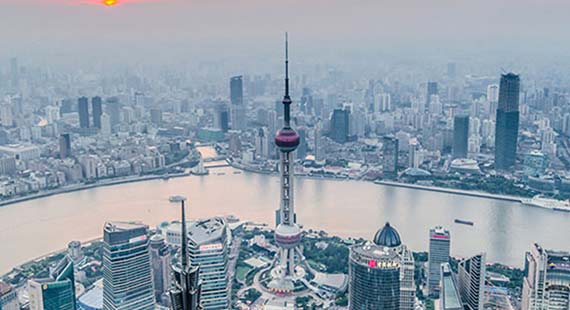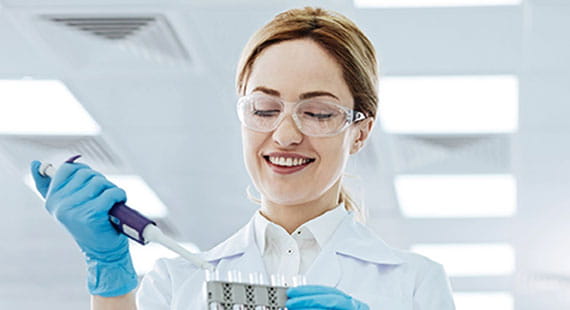
Delivering a safer world
Delivering a safer world
“This year’s World Accreditation Day celebrates how accreditation has played a key role in delivering a safer world. Since the Industrial Revolution, we believe that accreditation and certification have been and will remain relevant for decades to come as we usher in a new era of digital transformation.”
Ishan Palit
Member of the Board of Management, TÜV SÜD
Friday, June 8, 2018
Safety standards have been integral to development ever since the birth of industry, over three centuries ago. Just as industry has evolved from the analogue to the digital, globally recognised standards and accreditation have developed in parallel – helping make workplaces and products safer than ever.
June 9 marks World Accreditation Day 2018, an annual global initiative, established by international accreditation bodies. The day helps raise awareness of the importance of accreditation for all companies across different industries. This year’s theme: Accreditation: Delivering a safer world.
As we move into the brave new world of Industrie 4.0 – a wholly digital age – the accreditors of 2018 are having to develop new levels of expertise. Let’s examine how far we’ve come since the beginnings of industry.
The first industrial revolution from 1700 to mid-1800s changed the world beyond recognition. Humankind learned to harness the power of coal and water, leading to innovations like the steam engine. The industrial revolution also sparked the transition to new manufacturing processes, the use of machines and the rise of the factory system.
Working conditions in this new factory systems were often very poor. Work places were badly ventilated, overcrowded and workers faced safety hazards such as dangerous equipment and flammable gases. Workers formed unions that went on strikes, eventually leading to legislation that required workplaces to provide for proper ventilation and safer work spaces.
The birth of technical inspections in Germany also came as a response to safety hazards shortly after the conception of the steam engine. A crack in the mantle of one of the city’s steam boilers resulted in a fatal explosion that left one dead and several injured. The accident was not an isolated case, but one of many boiler explosions that resulted in numerous deaths. It brought attention to the need for regular inspection and an association for inspections was formed, driving the development of standards to ensure increased safety. This association became the forerunner of TÜV SÜD.
The first industrial revolution, that propelled important technological developments in many industries, demonstrated that innovations can only bring about improvements to the society after we learn to manage the risks that come along with it. Conformity assessment bodies had to put parameters in place to manage these risks, but they were also subjected to oversight by an authoritative body to ensure impartiality and competence, also known as accreditation bodies today.
In the late 1800s, a series of discoveries again changed the way the world did business. Electricity became essential to everyday life, with the first commercial lightbulbs being invented. Steel innovations began to replace iron and allowed manufacturers to produce durable construction projects such as ships and rail lines that further expanded transport.
The second industrial revolution was also a big leap forward for the agriculture, communication and energy industries. Industrialisation for the agriculture sector led to new dangers for workers from the use of pesticides and mechanised equipment. Pesticides were originally tested solely for its effectiveness but policy improvements considered its health impact on users as well. Eventually, pesticides were subjected to safety testing too.
Apart from safety, standards also took their first step in environmental protection and sustainability. Chimney builders had to comply to a minimum chimney height in order to reduce emissions and toxic pollutants.
Accreditation in the second industrial revolution expanded beyond the provision of safety, to quality services and maintaining an unpolluted environment as well.
Commerce was shaken up yet again in the 1980s, when industry shifted towards a new paradigm of digital electronics and information technology. This powered globalisation and marked the age of accelerations.
Manufacturing operations are now dispersed across the globe, with more product parts being produced from all over the world rather than in any particular country. The interdependency of connected economies has proven critical to stakeholders along the supply chain that inputs have to be compatible and that safety standards of different economies have to be met for global market access.
The International Laboratory Accreditation Cooperation (ILAC) was thus started in 1977 with the aim of developing international cooperation for facilitating trade through enhancing the acceptance of products and services across national borders. The ILAC works with local accreditation bodies across more than 100 countries to implement the system globally. Local accreditation bodies work with certification bodies, like TÜV SÜD, globally to ensure that the products and systems meet stipulated safety standards. This has also provided the confidence to consumers that the products in the markets are of reliable quality and are safe.
As we usher in the fourth industrial revolution, we must gear up to face the challenges that innovations in Internet of Things, artificial intelligence, blockchain and smart technology bring.
With the Internet taking over as the world’s primary means of communication, trade and payment, effective cyber and data security have become essential. Developing safe smart city solutions are becoming crucial as populations in many countries develop new sets of needs. To realise the full potential of digitalisation, we need to enable the interoperability of machines and data with a common language and platform.
History has shown that, standards have responded to emerging risks of the industrial revolutions and can empower us to overcome the challenges of a more interconnected Industrie 4.0 through standards that ensure safety, security and reliability.
With accreditation supporting conformity assessment bodies, governments, businesses and consumers can be assured that risks from new technologies will be managed and we can, progressively deliver a safer world.

Accreditation the catalyst for sustainable urban development
Learn more


Site Selector
Global
Americas
Asia
Europe
Middle East and Africa